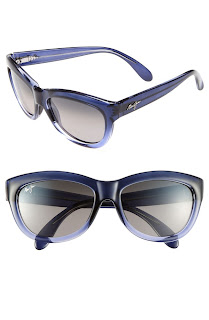2016 sunglass trends
 | |
| 2016 sunglass trends |
The sunglasses are essential accessories for many people. In addition to protecting your eyes from the sun, sunglasses bring new light to the face, cover the signs of fatigue after partying at night, hiding your eyes, giving a veil of mystery to the person wearing them and then they are stylish. People used to wear sunglasses will never be able to live without it. All lovers of sunglasses and also all those who want to renew their look will be happy to know the latest news, the trends, and brands that will be on the crest of the wave in 2016.
Sunglasses for spring and summer may not be considered entirely groundbreaking, but this season it’s time to cast aside the traditional aviators and think bigger, brighter, and bolder. In a nutshell, go with anything 70′s-influenced, which means the return of groovy rounded lenses. Women’s eyewear will follow a similar trend, with the exception that they will also see the return of the sexy cat-eye glasses, which we think is awesome!
Spring and summer are here, which means the return of sunshine and one of our favorite warm-weather accessories: sunglasses!




